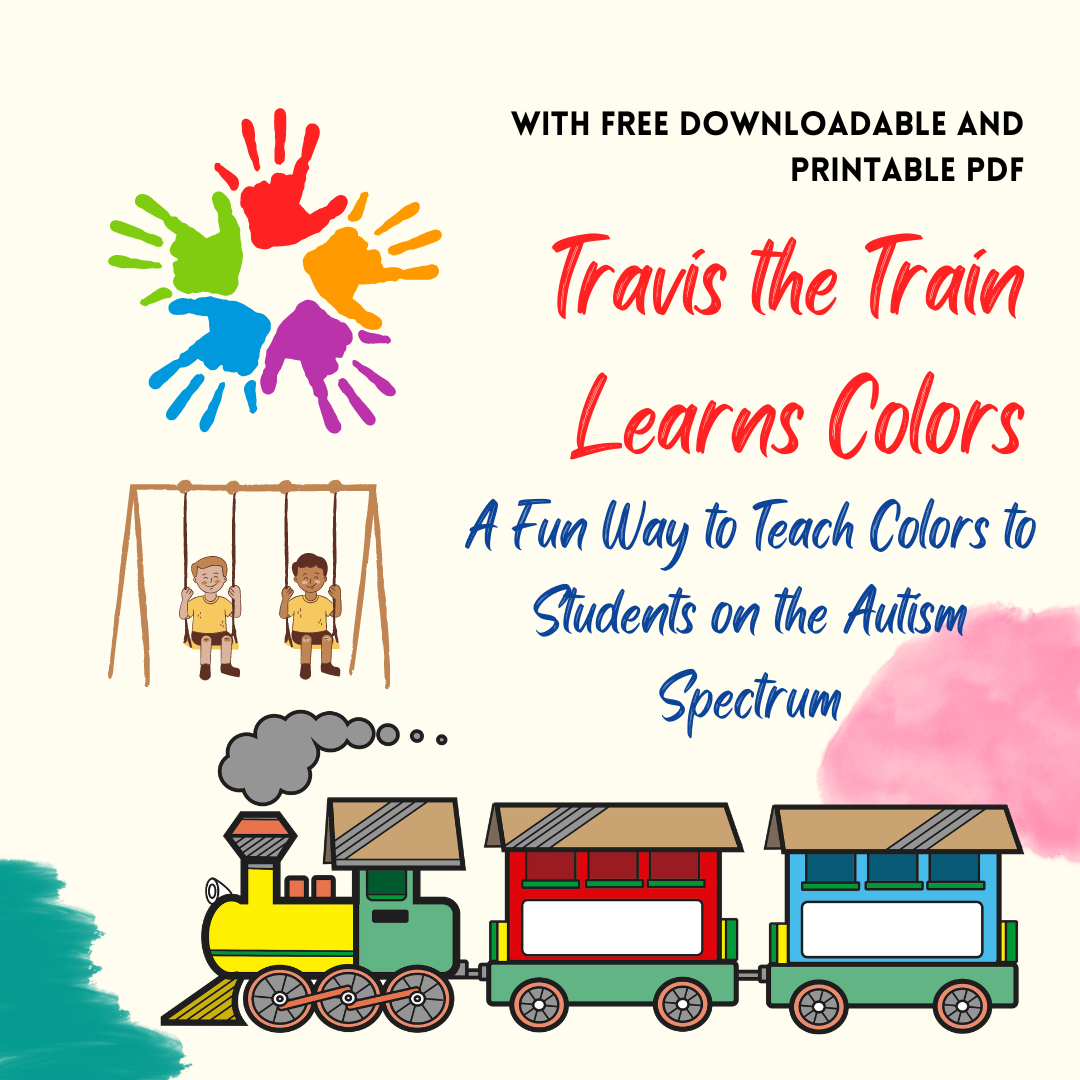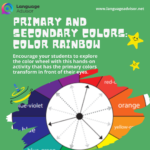Travis the Train Learns Colors: A Fun Way to Teach Colors to Students on the Autism Spectrum (With Free Downloadable and Printable PDF)
Travis the Train Learns Colors

Travis the Train Learns Colors
Teaching colors to children on the autism spectrum can be both exciting and challenging. Many children benefit from hands-on, visual, and structured learning approaches. To make learning colors more engaging, we’ve created a fun and interactive activity featuring Travis the Train, a friendly character who will help students learn about colors in a way that is easy to understand and enjoyable.
In this post, we’ll introduce Travis the Train’s Color Adventure—a colorful journey where students help Travis navigate different colored train tracks, match colored objects, and more! And the best part? You can download and print our free PDF worksheets to use in your classroom or at home.

Why Color Learning is Important for Children on the Autism Spectrum
Children with autism often respond well to structured and visually clear materials. Learning colors is not only a foundational skill for cognitive development, but it also helps with categorization, communication, and making sense of the world around them. Using fun characters like Travis the Train can capture their interest and keep them engaged while learning.
Meet Travis the Train
Travis the Train is a bright, cheerful locomotive who loves exploring colorful tracks. His journey takes him through different environments, each representing a new color. Along the way, students will help Travis identify colors by:
- Matching the train’s colors to objects (e.g., Travis is red, let’s find the red apple!).
- Sorting colored items to match with Travis’s tracks.
- Coloring activities, where students fill in Travis and the tracks with the correct colors.
Free Downloadable and Printable PDFs
To support learning, we’ve designed a set of printable worksheets that accompany Travis the Train’s adventure. These resources are specifically crafted with visual clarity and structure in mind, making them ideal for students with autism. The activities are simple, repetitive, and visually guided to reinforce color recognition in a way that is predictable and engaging.
How to Use These Worksheets
You can either print the pages out, or read them to the student on a computer, Smartphone, or tablet (such as iPad) for. My students seem to enjoy viewing it on a computer, phone, or tablet, but do whatever works best for your student.
- Visual Learning: Show the students the colors one at a time using the flashcards, then engage them by asking them to find objects around the room that match the colors.
- Color Sorting Games: Use the sorting worksheet to let children place colored objects (real or printed) on the right tracks.
- Fine Motor Skills: Coloring activities help develop fine motor skills while reinforcing color recognition.
- Interactive Play: Create a game where Travis needs help traveling along the correct colored track, making it a fun and hands-on way to learn.
Tips for Success
- Repetition is key: Repeating the color names and activities will help reinforce the learning.
- Positive reinforcement: Use praise and rewards to celebrate their progress.
- Keep it simple: Don’t overwhelm with too many colors at once. Start with basic colors like red, blue, yellow, and green, then gradually introduce more.
- Interactive learning: Incorporate real-life objects that match the colors in the activity to make learning more tangible.
Download the Free PDFs
To start Travis’s color adventure, download the free printable worksheets by clicking the link below. These activities are designed to be used over and over again, making learning colors a fun, ongoing process!
By engaging students with a fun character like Travis the Train and using structured, visually clear activities, learning colors becomes an exciting adventure. Whether you’re a teacher, parent, or therapist, these resources are a great way to help children on the autism spectrum grasp the concept of colors in a meaningful and enjoyable way.
Stay tuned for more activities and free resources to support your students’ learning journey!

DOWNLOAD THE PDF FOR FREE






